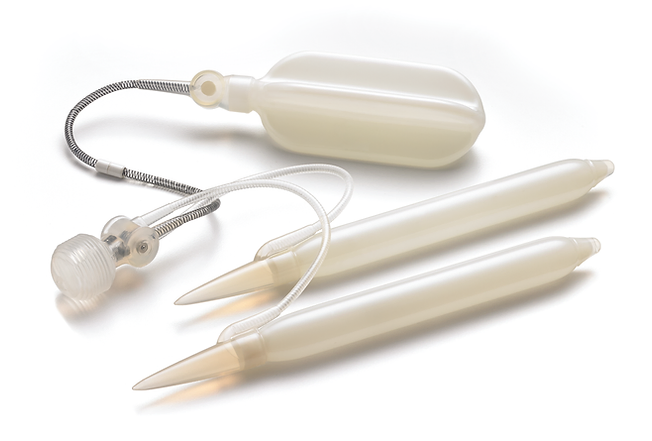


Penile implant surgery, also known as penile prosthesis implantation, is a proven medical solution for men suffering from erectile dysfunction, especially when other treatment options have failed. This surgical procedure involves placing a specialized device inside the penis, designed to restore the ability to achieve and maintain an erection sufficient for sexual activity. These implants are typically considered after non-surgical methods, such as medications, vacuum devices, or injections, do not provide satisfactory results. Although it is often seen as a last-resort treatment due to its surgical nature, penile implants have high success rates and significantly improve quality of life for both the patient and their partner.
There are two main types of penile prostheses: inflatable and semi-rigid. Inflatable penile implants are the most popular option due to their ability to mimic the natural erection process. These devices usually consist of three parts—a pair of inflatable cylinders placed inside the penis, a pump placed in the scrotum, and a fluid-filled reservoir implanted in the lower abdomen. By pressing the pump, fluid flows from the reservoir into the cylinders, producing a firm, natural-looking erection. After intercourse, the patient simply presses a release valve to return the penis to its flaccid state. Since all components are placed internally, the prosthesis is completely hidden, making it discreet and virtually undetectable from the outside. However, because of the multiple components, inflatable penile implants have a slightly higher risk of mechanical issues over time.
Semi-rigid penile implants, on the other hand, consist of bendable rods that keep the penis in a firm but flexible state. These implants are easier to implant surgically and contain fewer parts, reducing the risk of malfunction. While they offer a simpler and more affordable solution, one downside is that the penis remains semi-erect at all times, which can be noticeable under clothing and may cause discomfort in daily life.
Penile implant surgery is typically recommended when other erectile dysfunction treatments, such as phosphodiesterase type 5 inhibitors (PDE5 inhibitors), fail to work. Approximately 35% of men with erectile dysfunction do not respond to medication, making them potential candidates for penile prosthesis surgery. Before undergoing the procedure, patients should have a thorough urological and physical examination to assess whether surgery is appropriate and which type of implant is best suited for their needs. Understanding the surgical process, potential outcomes, and possible complications is essential before making a decision.
The procedure itself is relatively straightforward and usually takes about 45 minutes to an hour. Under anesthesia, a small incision is made—either just below the glans of the penis or through the lower abdomen—through which the implant is inserted. A catheter is also placed temporarily into the bladder to drain urine during surgery. Depending on the type of implant, components such as the pump and reservoir are positioned in the appropriate locations within the body. Once the device is fully implanted and tested, the incisions are closed and the surgery is completed.
Recovery from penile implant surgery is generally quick, with most patients returning home within one to two days. Some degree of pain, swelling, or bruising is normal and can last for a few weeks. To reduce the risk of infection, antibiotics are prescribed postoperatively. Most men are able to resume normal sexual activity within four to six weeks after surgery. Doctors may also recommend gentle daily handling of the device to help the patient become comfortable with its use and function.
Although penile implants are a highly effective treatment for erectile dysfunction, they are not suitable for every patient. Individuals with chronic health conditions such as uncontrolled diabetes, active infections, or frequent urinary tract infections may not be ideal candidates. Lung infections and certain medications may also pose a risk. It is important for patients to understand that penile implants are designed to restore erectile function but will not increase penis size, libido, or sexual performance beyond normal levels. These devices do not influence orgasm or ejaculation either, so expectations must be realistic.
As with any surgical intervention, penile prosthesis implantation carries some risks. The most common complication is infection, which may require the removal or replacement of the implant. Structural failure of the implant is another potential issue, particularly in inflatable models. While the materials used in modern implants are highly durable and reliable, mechanical malfunctions can occasionally occur, necessitating revision surgery.
Despite the potential risks, the advantages of penile implants are significant. They offer a long-term, dependable solution for erectile dysfunction, enabling men to engage in sexual activity spontaneously and with confidence. Many patients and their partners report high levels of satisfaction with the results, and the ability to restore a natural, fulfilling sex life often leads to improved emotional well-being and relationship quality. In rare cases where the implant does not meet the patient's expectations or complications arise, the device can be removed or replaced with another model through additional surgery.
In conclusion, penile implant surgery offers an effective and permanent solution for erectile dysfunction, particularly in men who have not benefited from conventional treatments. With proper patient selection, experienced surgical technique, and post-operative care, penile prostheses can restore sexual function in a discreet and reliable manner, helping men regain confidence and intimacy in their relationships.
Easily schedule your appointment by a Filling out our simple form